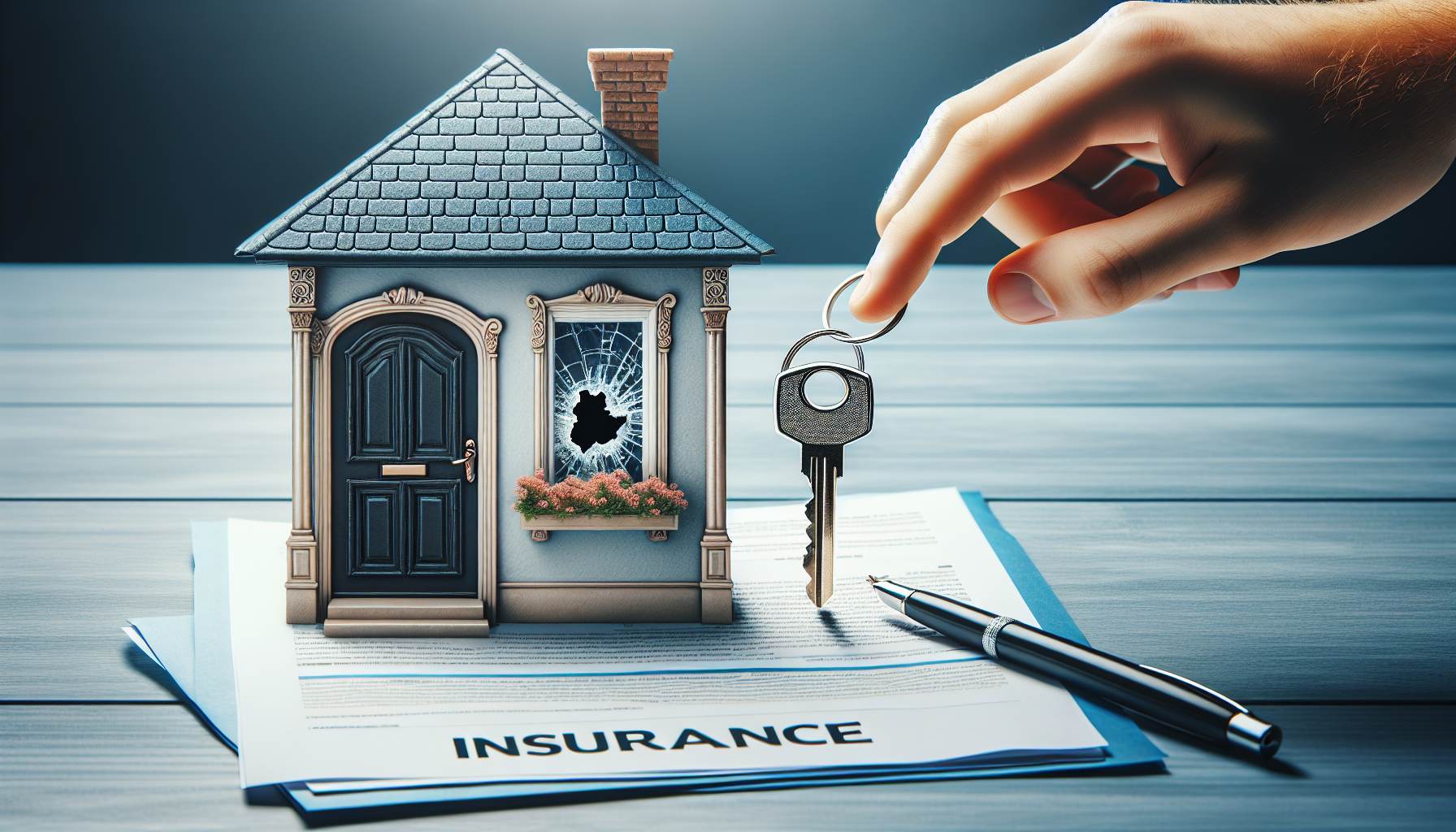
Does Insurance Cover Broken Windows for Homeowners?

Facing a broken window can be a distressing experience for any homeowner, not only due to the immediate security and weather protection concerns but also because of the potential financial strain of repairs or replacement. This highlights the pivotal question: does insurance cover broken windows? Understanding the scope of insurance coverage is crucial, as it directly impacts the decisions homeowners must make following such an event. This article aims to clarify the situations under which home insurance may provide relief for window damage, an important consideration for maintaining the safety and integrity of one’s home.
We will delve into common causes of window damage, outline the types of insurance coverage that typically apply to windows, and discuss the exceptions and limitations homeowners may encounter. Additionally, practical steps to take after window damage occurs will be outlined, offering a comprehensive guide to navigate through the process. By exploring whether home insurance covers window replacement and other related queries, such as does home insurance cover windows in various scenarios, readers will gain valuable insights to better prepare for and respond to window damage.
What Causes Window Damage?
Weather-Related Incidents
- Extreme Weather Conditions: Windows are frequently damaged by severe weather events such as storms, high winds, and hail. These elements can directly impact windows, causing breakage or structural compromise.
- Temperature Fluctuations: Significant temperature changes can adversely affect window integrity. Windows may crack or break due to the stress from expanding in heat and contracting in cold.
- Moisture and Humidity: In humid climates, moisture can accumulate, leading to mold, mildew, and deterioration of window frames and sills, which can weaken the glass and its setting.
Accidental Damage
- Home and Yard Accidents: Common accidents causing window damage include objects like baseballs hitting the glass or furniture impacting windows during moving.
- Vehicle-related Incidents: Rocks or debris thrown by passing vehicles can strike and damage windows, often leading to the need for repairs.
- Domestic Mishaps: Simple household accidents, such as slipping and falling into a window, also contribute to window damage. These incidents may not be covered by insurance if deemed a result of negligence.
Vandalism and Theft
- Acts of Vandalism: Windows can be broken as a result of deliberate acts of vandalism, such as graffiti or other forms of malicious mischief.
- Theft-related Breakage: Windows are often broken during burglaries or thefts, where intruders break in through windows, leading to significant damage.
- Civil Commotion: During riots or other forms of civil disturbance, windows can be damaged or destroyed as part of broader acts of vandalism.
Types of Insurance Coverage for Windows
Dwelling Coverage
Dwelling coverage is a fundamental aspect of homeowners insurance that covers the physical structure of the home, including windows, when damaged by a covered peril. This coverage typically falls under Coverage A in most insurance policies. It ensures that windows which are integrated into the home’s structure are protected and can be repaired or replaced if damaged by events such as storms, fires, or vandalism.
Other Structures Coverage
For windows that are part of detached structures on the property, such as garages or sheds, Other Structures Coverage, often labeled as Coverage B, applies. This coverage helps homeowners manage the costs of repairs or replacements for windows not attached to the main house but within the property boundaries.
Liability Coverage
Liability coverage, or Coverage E, provides financial protection if the homeowner or a family member accidentally causes damage to someone else’s window. For example, if a child throws a ball and it breaks a neighbor’s window, this coverage can cover the repair costs. This aspect of homeowners insurance ensures that accidental damages to third-party property are financially manageable.
Each of these coverages plays a crucial role in ensuring that homeowners can address window damages efficiently and effectively, without bearing the full financial burden alone.
Exceptions and Limitations
General Wear and Tear
Homeowners insurance typically does not extend coverage to damages arising from general wear and tear. Over time, parts of a window may deteriorate, such as the frame or the glass itself, which often results in out-of-pocket expenses for repairs or replacements. This exclusion also includes damages due to age-related factors, where windows might start allowing drafts or fail to seal properly, which are usually considered by insurers as natural wear and tear.
Rotted Windows
Rotted windows are a common issue that homeowners might face, especially in older homes. However, if a window starts to decay due to ongoing exposure to moisture or other gradual factors, most home insurance policies will not cover the repairs. This is often classified under general maintenance, which the homeowner is expected to manage. Even if the rotting is discovered after a storm or another covered peril, the insurance company may still decline the claim, attributing the primary cause to neglect or insufficient maintenance.
Broken Window Seals
The integrity of window seals is crucial for maintaining energy efficiency and protecting against weather elements. Unfortunately, broken window seals resulting from regular wear and tear or poor maintenance are generally not covered by homeowners insurance. This is because such damage is expected to be prevented through routine checks and maintenance. However, if the seal damage occurs due to an act of vandalism or as a result of a break-in, then it may be covered under the homeowners policy. Regular inspections and maintenance are advised to mitigate issues that typically fall outside the scope of insurance coverage.
Steps to Take If Windows Are Damaged
Documenting the Damage
After experiencing window damage, the first critical step is to document the extent of the damage thoroughly. Homeowners should start by taking high-quality photographs and videos of all affected areas, capturing multiple angles and details under good lighting conditions. This visual documentation is crucial in accurately capturing the extent of the damage, especially focusing on specific areas like broken windows, damaged frames, or impacted structures. Additionally, homeowners should create a detailed written inventory of all damaged items, noting the make, model, and estimated value of each, which aids in the claims process.
Contacting Your Insurance Company
Once the damage has been documented, the next step is to contact the insurance provider to report the damage. This can typically be done via phone, online, or through a mobile app, depending on the insurer’s options. Homeowners should be prepared to provide a preliminary account of the damage, including specific details on when and how the damage occurred. It is crucial to maintain a detailed record of all communications with the insurance company, including details of phone calls and copies of all emails and letters.
Getting a Repair Estimate
Before any repairs are initiated, obtaining multiple repair estimates from local, trusted contractors is advisable. These estimates will provide a range of potential costs and outline the scope of necessary repairs, which can be crucial during the insurance claim process. Homeowners should not sign any contracts or make payments until the insurance provider has approved these estimates. Additionally, it may be beneficial to have the contractor present during the insurance adjuster’s visit to ensure all damages are adequately assessed and documented.
By following these steps, homeowners can effectively manage the aftermath of window damage, ensuring that they are well-prepared to navigate the insurance claims process and restore their property efficiently.
Conclusion
Through the exploration of the varied causes of window damage and the subsequent coverage provided by homeowner’s insurance, it becomes clear that understanding one’s policy is paramount. From weather-related incidents to vandalism and the impact of accidental damage, we’ve underscored the conditions under which insurance may alleviate the financial burden of repair or replacement. This comprehension not only aids in the efficient handling of such unfortunate events but also in the proactive measures homeowners can adopt to mitigate potential damage.
The significance of being well-informed about the nuances of homeowners insurance coverage cannot be overstated, especially in the context of the exceptions and limitations that may come into play. By highlighting the steps to take when window damage occurs, from documentation to contacting one’s insurance company, the article furnishes homeowners with a roadmap to navigate the oftentimes complicated claims process. Ultimately, this knowledge equips homeowners with the power to ensure the security and integrity of their homes, underscoring the broader implications of insurance literacy in financial planning and home maintenance.


